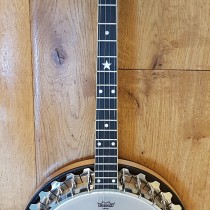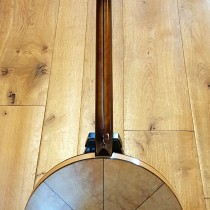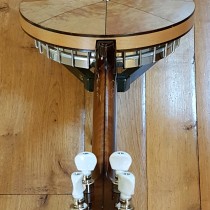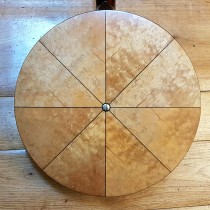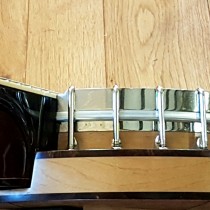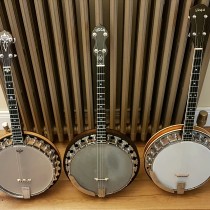Majestic Tenor Banjo
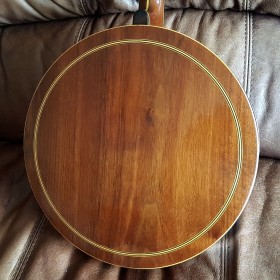
majestic-01
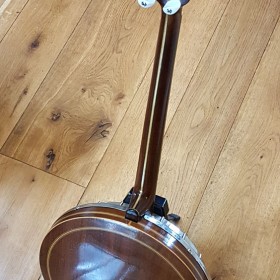
majestic-02
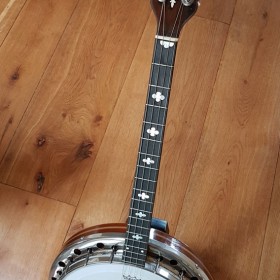
majestic-03
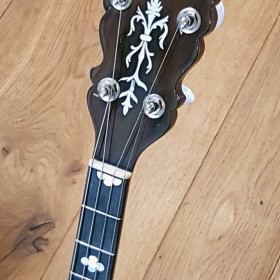
majestic-04
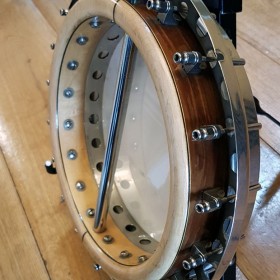
majestic-05
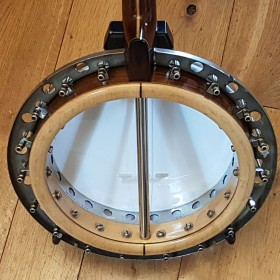
majestic-06
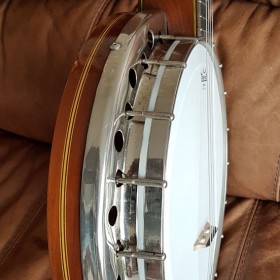
majestic-07
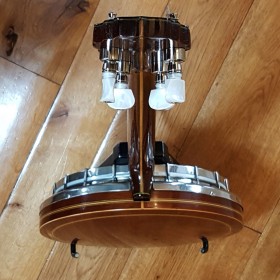
majestic-08
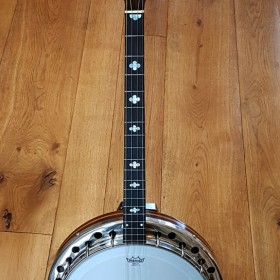
majestic-09

majestic-10
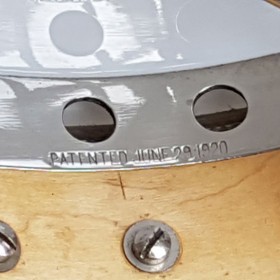
majestic-11
A little bit of history
19 fret tenor banjo from 1920’s made by the Puntolillo Company, New York, and later in Lyndhurst, New Jersey. Around 1924 Puntolillo began building S. S. Stewart branded banjos and did so for several years, the Stewart Wondertone models are Puntolillo products. Before the big 20’s tenor banjo boom he was making open back 17 fret models under the names The Bell and Princess and they had a different tone ring design than Puntolillo’s later 1920’s 19 fret tenor banjos. In the 20’s, of course, he had his own Majestic line and also produced banjos named Regina and Symphony.
Its archtop tonering patent was issued in 1920 to Gaetano F. Puntolillo and it is this which gives this instrument its unique tonal qualities. I would put this banjo on a power with most professional level banjos, it has a sweet sustain with bass resonance and a rich soft tone. I have it set up with a white frosted top but if you are looking a brighter sound a clear head would certainly do the job.
Banjo details
The five piece neck is constructed from walnut with centre maple strip and green dyed pear wood either side and is perfectly straight with nice low playing action. The ebony heal cap also is sandwiched with maple and pear wood. The head stock has inlaid floral design and the Magestic name both in mother of pearl. The 19 fret ebony fret board is inlaid with ‘lets call it 4 leaf clover’ pearl position markers and the frets are all good. The resonator is also walnut with inlaid maple circles on the back and along the side and is attached to the rim by 4 hex nut screws.
Now on to the ‘engine’ of this banjo, the rim is 3/4″ thick multiply maple with walnut veneer to the outside walls and maple to the inner walls. the tension hoop is held in place by 18 shoe brackets/hooks and nuts which pass through the curved nickel plated flange plate. Care and detailed attention has been put into the finish of the inside rim when you consider a calf skin head would hide it from view. The patented brass/nickel plated arch top tone ring rests on the rim and this is what gives this banjo its real sound. The inner resonator is curved and when attached to the rim the sound is projected through the holes in the flange plate. The neck is attached by a single 1/2″ thick nickel plated rod, all metal plating is in excellent condition and lacquered wood is also good. In conclusion I highly rate this banjo for its design, build quality and sound, if you already own a quality banjo then this one should be your back up.
This banjo is now sold
